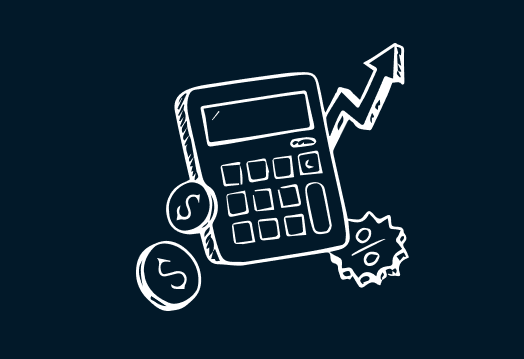If you want to enjoy your golden years without financial stress, you need a plan. What are the elements of a retirement plan?
Simply put, a good retirement plan is like a roadmap—it helps guide you to a future where you can relax, do the things you love, and not worry about running out of money.
Just like you wouldn’t go on a long road trip without a map (or at least a GPS!), you shouldn’t head into retirement without a clear plan in place.
The good news is that planning for retirement doesn’t have to be complicated.
By focusing on key elements like superannuation, investments, savings, and lifestyle goals, you can create a retirement plan that supports the life you truly want.
Let’s dive into what makes a strong retirement plan and how you can take control of your financial future.
Superannuation: The Foundation of Your Retirement Plan
In Australia, superannuation is the backbone of most retirement plans.
Your employer is required to contribute a percentage of your earnings into your super fund, and over time, this money grows thanks to investment returns.
The more you contribute to your super throughout your working years, the more financial security you’ll have when you retire.
One way to boost your retirement savings is to make additional contributions to your super.

Whether it’s through salary sacrificing or voluntary after-tax contributions, adding even a little extra can make a big difference over time. This can also be a good way to reduce your personal income tax.
The key is to start as early as possible so that your money has more time to grow.
It’s also important to review your super fund regularly. Because let’s face it, they aren’t all that good at managing your most important asset. So we need to keep an eye on them.
Make sure you’re in a fund with strong long-term performance and low fees.
If you’re a little more keen to be in control, consider a self-managed superannuation fund. Speak to your accountant to determine if this is appropriate for your circumstances.
Investments: Growing Your Wealth Beyond Super
While superannuation is a great way to build retirement savings, it’s not the only option.
You should also invest in shares, property, and other assets to create additional sources of income for retirement.
Investing outside of super gives you more flexibility.
Whether it’s dividend-paying shares, a rental property, or exchange-traded funds (ETFs), having multiple income streams can provide extra security. This way, if one investment underperforms, you still have other assets working for you.
The best approach is to choose investments that align with your goals and risk tolerance.
If you’re still a long way from retirement, you might take on more risk to grow your wealth faster. But as you get closer to retirement, shifting toward more stable investments can help protect your money from market swings.
The good news is that it doesn’t have to be complicated. Just understand your life circumstance, your risk tolerance, and adjust your investments accordingly.
Savings and Emergency Funds: A Safety Net for Retirement
Even with super and investments, it’s important to have cash savings for short-term needs and emergencies.
Retirement isn’t just about covering your daily expenses—it’s also about being prepared for unexpected costs, like medical bills, home repairs, or travel to see family.
A good rule of thumb is to have an emergency fund that covers at least six months’ worth of living expenses (start with three months if you need to).
This provides peace of mind so that you don’t have to dip into your super or sell investments when unexpected expenses come up.
Setting up an automatic savings plan can help make sure you’re consistently building up your cash reserves.
Even small amounts saved regularly can add up over time and provide valuable financial security in retirement.

Retirement Lifestyle Planning: More Than Just the Numbers
A great retirement plan isn’t just about money—it’s also about how you want to live.
Ask yourself what kind of lifestyle you want in retirement. Do you dream of travelling? Downsizing to a beachside town? Spending more time with family?
Your financial plan should be built around these goals.
The best way to do this is to estimate your future expenses based on your desired lifestyle. Some costs may go down (like work-related expenses), but others may go up (like healthcare and travel). Having a clear picture of what you’ll need financially will help you plan better and avoid surprises.
If you’re not sure where to start, tracking your current expenses can give you an idea of your spending habits and what might change when you retire.
The more clarity you have about your lifestyle goals, the better you can align your financial plan with them.
Debt Management: Entering Retirement with Financial Freedom
Carrying debt into retirement can put a strain on your finances.
The less debt you have, the more of your income and savings you can use for the things you enjoy. Paying off credit cards, personal loans, and even your mortgage before you retire can help reduce financial stress.
If you still have debt as you approach retirement, it’s important to have a strategy in place.
Prioritising high-interest debts first can save you money in the long run. Or you can choose to payoff the smallest debts first and then roll what you were paying for these loans into extra payments for the next largest debt. The benefit of this strategy is momentum.
You may also want to consider downsizing your home or restructuring loans to make repayments more manageable.
The goal is to ensure that your retirement income goes toward enjoying life, not paying off past expenses.
A current client of mine recently reviewed his debt and in conjunction with his plan needed to sell down some assets to reduce debt, refinance a bundle of debt and as a result, now has positive cashflow in his property portfolio. Retirement is now a more realistic choice in the next few years for him.
Being proactive about debt management now can set you up for a more comfortable and stress-free retirement.
Taking Personal Control of Your Retirement Plan
A secure and happy retirement doesn’t happen by accident.
It takes planning, smart financial decisions, and taking control of your own future.
Too many people put off retirement planning, assuming they’ll figure it out later—but the sooner you start, the better your results will be.
Your retirement plan should be a living document that you review and adjust as needed.
Life changes, markets fluctuate, and your goals may evolve over time. Keeping an eye on your plan and making adjustments ensures you stay on track and avoid unpleasant surprises.
Don’t leave your future in someone else’s hands.
Ultimately, the responsibility for your retirement lies with you. Educate yourself, stay informed, and make decisions that align with the life you want to live.
Conclusion: Your Retirement, Your Future
So, what are the elements of a retirement plan?
A strong retirement plan includes superannuation, investments, savings, lifestyle planning, and debt management.
But more than that, it requires you to take control, set clear goals, and make decisions that serve your future self.
Planning for retirement doesn’t have to be overwhelming.
Think of it as creating a map for your financial future—one that leads to security, freedom, and the ability to enjoy life on your own terms.
The key takeaway is this: the best way to ensure a comfortable retirement is to have a plan in place. The earlier you start, the more choices and flexibility you’ll have.
Take action today, plan for the future, and give yourself the gift of a retirement filled with possibilities.
To schedule a Smart Investor Call and start the journey to plan your financial future, click the link here to find a time that works for you.


